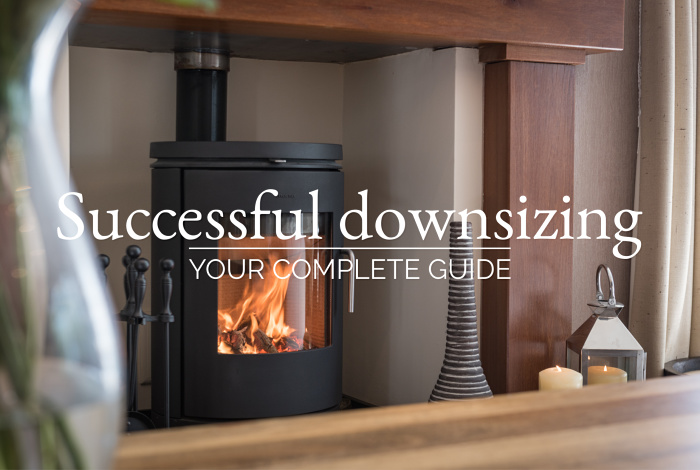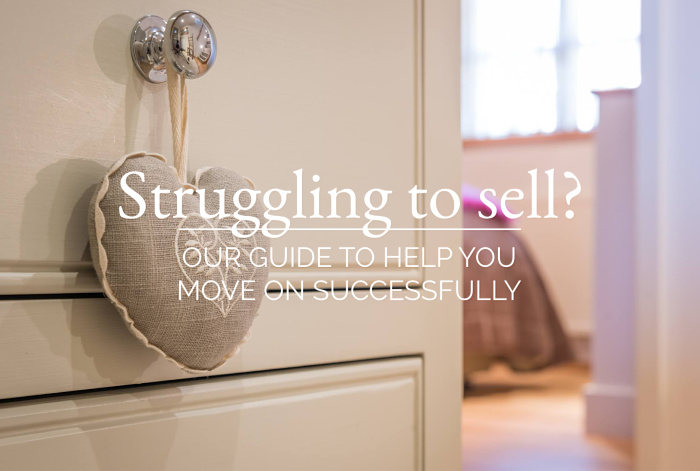Summer can be an exciting time of year to sell your home, the garden has never looked better and the rooms are bathed in light. To help make your home look its best this season, we bring you five easy ways to style your home for summer.
If you’ve chosen summer as the season to move home, we’ve compiled a bucket (and spade) list of top tips to help get your home ‘beach body’ styled for the market.
Sizzling barbecues, borders buzzing with the soft sound of bees around the lavender and hours of daylight to show off your home at its very best. Summer certainly can cast a positive light on your home, so let us direct you to the sunniest spots and help you avoid stepping into the shadows.
1. Develop a green finger
In theory, your garden has never looked better.
Colours are at their sharpest, borders are filled to the brim with healthy shrubs and flowers and the grass is a lush, green baize.
Summer is the month for uninhibited growth.
Mow the lawn twice weekly to ensure it remains in peak condition, or on a weekly basis in particularly dry spells.
For larger lawns, consider creating a feature by adding a diagonal pattern. This is fairly straightforward on rectangular or square lawns. For circular or irregular lawns, begin by identifying a focal point across from the widest point on the lawn before lining up the mower.
Remember not to mow while the grass is wet, as this could damage the turf.
Weeds also love the summer sun, so if you are struggling to keep on top of the borders, try adding a thick layer of mulch to keep weeds at bay.
Consider the garden as an extension of your home, more so than ever in summer. A collection of fragrant herb pots outside the kitchen door can evoke sensory pleasure in your viewer and whet their appetite! Thyme, rosemary and mint are all hardy growers and can be picked up easily at garden centres and supermarkets.
If you don’t tend to spend much time in your garden, it might be worth taking a tour and identifying peaceful pockets for reading or suntraps you can recommend to viewers. Also, be sure to keep hedges and bushes trimmed back around paths and seating areas so your viewers don’t come across any obstacles during their tour.
Cat owner? Be sure to check the back doorstep before a viewing in case your feline friend has deposited any ‘tokens of their affection’!
2. Lift the mood with sunny accents
It’s not necessary to do a full-scale redecoration of your home prior to selling in the summer, but the addition of some sunny accents can lift the mood considerably. After all, nobody wants to step out from the bright sunshine and into a gloomy cave.
Swap heavier textures, such as velvet throws and woollen rugs, for lighter linens and cottons. Maintain that ‘Hygge’ cosiness with Scandi-style weaves. You don’t need to pick bold colours; billowing Gatsby whites and creams will do just as nicely.
House Beautiful lists 70s Scandi as the number one trend for summer 2019, quoting the Head of Design at Dunelm, Debbie Drake, as highlighting macramé planters, earthy palettes, geometric prints and accent colours as key picks for this season.
If all else fails, a splash of bold colour can invigorate any room. A turquoise vase, a yellow cushion or a fuchsia throw are all low-cost elements that can invite a touch of summer into your home.
Why not get really creative and use a rectangle of artificial grass for your back doormat?
3. The windows are the eyes to the sale…
Ok, we’ve played with that idiom a little, but for good reason. If eyes are the window to the soul, windows are the eyes to your home…and they are more noticeable than ever during the summertime.
Windows capture the view from your home, possibly quite a spectacular view, and as such they need to be properly maintained at all times.
Summer can be particularly tough on windows; dry spells cause loose dirt to be blown about, heavy pollen counts combined with occasional showers can leave your glazing looking less than dapper.
Crystal-clear windows not only enhance the natural beauty of your home, they let in more light.
It’s best to plan ahead with this one, cleaning windows on a hot sunny day is not recommended as they will most likely dry streaky. Instead, pick an overcast day.
Be kind to the environment and leave the expensive brand window cleaners on the shelves. For really dirty windows, add a splash of vinegar to a bowl of warm water. Begin at the edges of the windows and move towards the middle, rinsing your cloth regularly. After washing, a dry cloth should help to remove any streaks.
If your windows are palatially sized, don’t be afraid to call in reinforcements from the professional realms. The importance of sparkling clean windows cannot be understated.
An often-overlooked element in summer house styling is curtains. Heavy drapery can appear imposing during the summer time, so consider taking down particularly wintery fabrics prior to viewings.
Consider also the neatness of drawstring blinds. A well-placed piece of tape can help to conceal unsightly, dangling cords.
4. Make your home a refuge from the heat
When the sun is cracking the flags outside, make your home a place of refuge for your wilting viewers.
Invest in an attractive glass jug, perhaps a vintage tray and some colourful tumblers, and be ready with the freshly squeezed lemonade on those swoon-inducing hot afternoons.
Invite some cooling greenery into your home. Peace lilies can survive even the most negligent of owners! For the kitchen, consider a trailing plant such as ivy. In addition to adding an aesthetic element (ivy comes in a variety of yellow, white, green and black hues), ivy helps purify the air of mould and bacteria.
Another hardy kitchen plant is aloe vera; handy when kept close to the cooker as its gel offers a soothing salve for burns.
Freshly cut flowers from the garden are a simple and effective way of brightening up the room. Try to match the colour to your room’s scheme. A few sprigs of soothing lilac in a guest bedroom creates both aroma and colour for your visitors.
5. Splash the colour upstairs
Create the ultimate room of refreshment for viewers by ensuring your bathroom is ready for the season.
An easy way to add a splash of colour is to purchase vibrant coloured towels for the bathroom. Daffodil yellow, coral red and aqua blue all convey that summer-holiday beach-umbrella vibe.
Match them with a similarly-coloured bath mat and even accessorise your toothbrush for a low-cost makeover.
Adding pastel tones to the walls such as honey, elderflower and soft sage can also reinvigorate your bathroom ready for the summer season.
When it comes to styling your bedroom for summer, begin with a de-clutter and spring clean. An overloaded bedroom can be oppressive and off-putting.
With a blank canvas to work with, it’s time to create a masterpiece.
Why not invest in a white cotton bedding set? Put practicality to one side and embrace the cool tones and purity of alabaster.
Burning a Jo Malone Orange Blossom scented candle by the bed in place of a heavy shaded lamp can bring the lightness of the solstice to your bedside table.
Trade your blackout curtains for wooden shutters, a simple switch that allows you to adjust light levels in the day time and provide you with total darkness at night.
Tuck your heavy feather duvet away in the bedding box for the summer season, and invest in some Egyptian cotton sheets.
All that’s left to do now is to apply the sun-cream and sit back and marvel at your handiwork. All in a summer day’s work.



